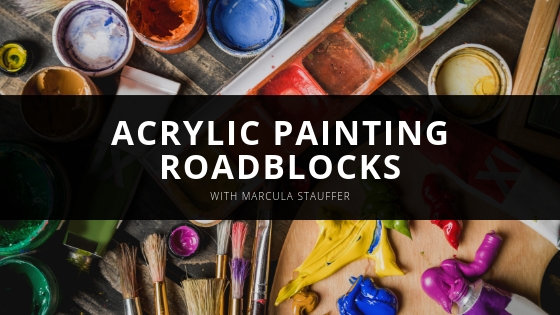Experienced artist, Marcula Stauffer, explains common mistakes made by beginners and how to fix or avoid them.
When starting a new venture like acrylic paint, you’ve got to know that alongside growth and progress also comes trial and error. While there is no right or wrong way to create art, knowing how to overcome common roadblocks can help ease a beginner’s mind. After many years of experience in the studio, Marcula Stauffer shares his expertise to get you past roadblocks and onto success.
#1. Expecting Perfection
A new artist needs to understand that to improve acrylic painting skills, one MUST become comfortable with making mistakes. This process may be frustrating or discouraging, but without experimenting, how would you know what works and what doesn’t? Marcula Stauffer believes that the only way to get a feel for making strokes, using different mediums, and blending is by making mistakes and leaving behind the notion that every work of art is perfect.
#2. Choosing the Wrong Supplies
Think about what you would like the painting texture to look like. Not all paints, brushes, and canvases are created equal. As a beginner, it may make sense to choose some cheaper materials as you learn and get comfortable with the hobby. Marcula Stauffer notes that this can lead to discouragement as it can make your artwork lower quality. A cheap, rough canvas can make it difficult to create fine details, lines, or smooth blending when using acrylic paint. Poor canvases can absorb high amounts of paint and take the joy out of creating art.
This same concept also applies to choose the right acrylic paint. Cheap options can cause streaking or messy, uneven blending. Thin paint may require many coats, which makes for a more tedious painting experience.
#3. Not Using Enough Paint
There’s no need to stick to the dry brushing technique found in many beginners tutorials. Once you get the hang of things, Marcula Stauffer recommends taking it to the next level by using more paint. While having little paint on your brush may make it easier to create shadows and highlights, the more you paint the more you will realize how quickly acrylics dry. With a thicker amount of paint on your brush, it will be easier to blend colors and create texture.
#4. Starting Large
As previously mentioned, acrylic paint dries quickly, meaning it’s more difficult to cover and blend a large canvas. Marcula Stauffer suggests starting on a smaller canvas while learning to save both time and storage space in the long run. This can also help with the cost of supplies by using less paint overall.


